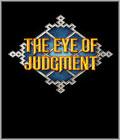Genre: Card-Based Strategy RPG
Publisher: SCEA
Developer: SCE Worldwide Studios, Japan Studio
Release Date: Q4 2007
Whether borne of a marketing meeting or merely the result of imagination run wild, there's no denying the unbelievable potential for profit held within The Eye of Judgment. Endless expansions? Booster packs? It's the stuff of dreams, assuming you own stock in Sony.
But if you're actually planning on playing The Eye of Judgment, you don't care. You're in it for the experience, the competition, or perhaps the collectable aspect of it all. Previous attempts to encapsulate the collectible card game (CCG) experience in a digital format have largely failed due to one presumably obvious element: the lack of cards! I'm no expert in the realm of CCGs, but there's a definite thrill in buying booster packs, assembling a deck, and having physical cards that you can swap or sell.
The Eye of Judgment recognizes this, crafting its video game experience around the use of collectable cards not unlike those of Magic: The Gathering or the Yu-Gi-Oh CCG. Thirty cards comprise the playing deck, and the starter set will include a pre-made deck and an additional booster pack of eight cards. Additional theme decks and booster packs will be sold separately, and with a total of 110 cards in the initial set, it could take a major investment to collect every card. That doesn't even take into consideration the expansion sets that will follow the initial release.
The PlayStation Eye USB camera makes all of this possible, as it reads electronic codes imprinted on the cards to trigger an in-game version of the character, spell, or action on the playing mat. The Eye is suspended by a supplied plastic stand over a 3x3 grid, and the ultimate goal of each player is to control five of the nine fields on the grid. Taking control of a square requires the placement of a character card, but maintaining control can be a tricky endeavor. As players attack, counterattack, and cast spells during their respective turns, keeping several characters afloat in the midst of the madness can be rather challenging.
But that's why The Eye of Judgment is a strategic experience. Each field on the map is assigned to one of five elements (fire, water, stone, forest, and biolith [mechanical]), and similarly, so is each card. As such, placing a card on a field with the same alignment will benefit the player (usually by giving the character +2 hit points), while placing it on an opposing field might weaken the character or spell in some way. Each card lists everything a player needs to know, including its alignment, in which directions it can attack or counterattack, what it can do, and how much mana is required to use its ability.
Each turn, a player draws a card from the deck and can choose to place a card, attack with an already-placed card, or do both (if mana permits). Some actions, such as attacking with an existing card, require the player to place one of four action cards under the camera. While there is certainly a steep learning curve when it comes to building a deck and properly matching or opposing the elements (especially if the player has no previous CCG experience), the gameplay is guided and fairly self-explanatory, and the final game is sure to feature a comprehensive tutorial mode.
At first blush, it might be easy to question why a card game even needs a digital element, but the answer is more than sufficient. Not only will The Eye of Judgment feature player vs. player duels, but also player vs. computer battles and online play. All three of these are compelling options, but the final two take the CCG experience far beyond its normal boundaries. No longer will two players have to meet up to play, and for that matter, a second player isn't even necessary. Gamers can use the single-player mode to perfect their decks before hopping online or playing against a friend.
However, online play does bring up the sensitive subject of cheating. To overcome this issue, The Eye of Judgment will require players to "register" a 30-card deck with the camera before playing online, thus eliminating the ability to swap in additional cards at will. However, it remains to be seen whether these anti-cheating measures will block one's ability to use any card from the deck instead of drawing a card at random. Based on the effort put into registration and the like, I suspect that such an issue will be addressed prior to release, if it hasn't already been.
The Eye of Judgment was developed in collaboration with Wizards of the Coast (creators of Magic: The Gathering), so its CCG pedigree is undeniable, but other, more pressing issues remain. Will mainstream gamers embrace it? Will Sony take a hit on the initial package to get the game into homes? Luckily, SCEA still has a few months to iron out these details (and others), as The Eye of Judgment is slated for a fourth quarter release. It may seem like an unlikely contender for a holiday hit, but I'm hopeful that SCEA will prove us all wrong.
More articles about The Eye of Judgment











 The Eye of Judgment presents a new style of gameplay where collectable trading cards, embedded with a CyberCode, are brought to life in the 3D game. Select a card, place the coded card in front of the PlayStation Eye for their respective creatures to come to life and battle on screen.
The Eye of Judgment presents a new style of gameplay where collectable trading cards, embedded with a CyberCode, are brought to life in the 3D game. Select a card, place the coded card in front of the PlayStation Eye for their respective creatures to come to life and battle on screen.





























